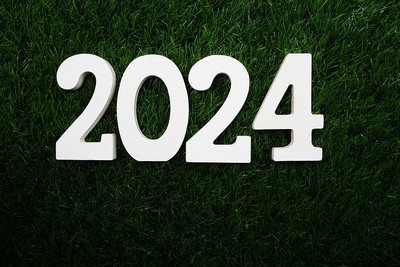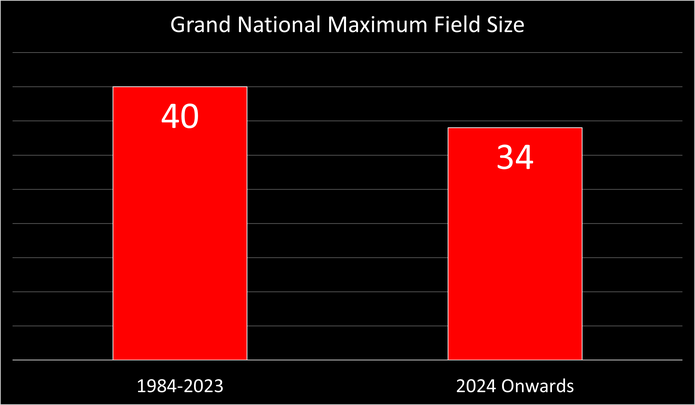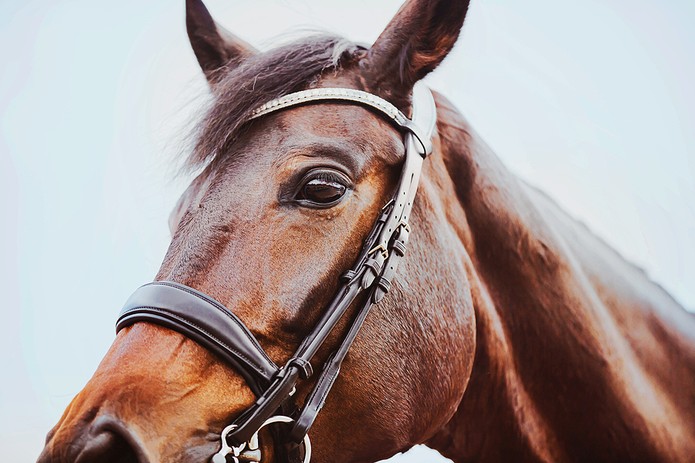 A smaller field of horses and changes to the layout of the Aintree track are just two of the ways that the Jockey Club plans to make the Grand National a safer race as of 2024.
A smaller field of horses and changes to the layout of the Aintree track are just two of the ways that the Jockey Club plans to make the Grand National a safer race as of 2024.
There has been pressure for alterations to be made to the famous race after three horses sadly lost their lives at the Aintree Festival in 2023.
So the Jockey Club has set out a manifesto to deliver its promised ‘evolution’ of the April showpiece, which will mean that the race will play out differently from 2024 onwards.
How Many Horses Will Run in the Grand National?

The field size of the Grand National has been fluid over the years.
During days of yore, the number of runners in the National often exceeded 40 – the 1929 edition, for example, had a whopping 66 entries take to the track. Unsurprisingly, that led to chaotic scenes at the start and over the early fences, resulting in a large number of fallers and unseated jockeys.
So it was decided to cap the field at 40 horses, with reserves brought in if an entry was declared a non-runner up until the morning of the race.
However, that will be a thing of the past as the Jockey Club looks to improve horse welfare and the safety of all participants. As of 2024, the field for the Grand National will be capped at 34 horses – a significant reduction in the number of horses on the Aintree track.
The reason is simple: fewer horses in the field should mean there’s more space and time for jockeys to jump the sizable fences safely. The research conducted by the Jockey Club and related parties has decided that 34 is the right number to maintain safety while ensuring that a smaller field doesn’t race too keenly.
Sulekha Varma, the clerk of the course at Aintree, said:
“We know from research papers and internal analysis of jump races that there is a direct correlation between the number of runners and the risk of falling, unseating or being brought down.
“However, we also must consider that reducing the field size by too great a number could create a faster race and have an adverse impact in terms of safety.”
Other Changes

The maximum field size is the most significant change ahead of the 2024 races but there will be a number of other tweaks to the big race next year.
First Fence Position
Traditionally, the Grand National course at Aintree has had a decent run-out from the starter’s orders – enabling the horses to get up to a good gallop before taking the first fence.
Having analysed the various data points, the Jockey Club has decided that this opening burst has led to some editions of the National being run too keenly early on – which can naturally have a knock-on effect later in the piece.
So another change will be to move the first fence some 60 yards closer to the start, which should slow the race down early on and allow the horses to find a more temperate gallop.
Start Time
The start time of the Grand National has been switched around over the years, with a move to 17:15 designed to appease those who might otherwise be attending a football match – while building more anticipation of the race itself.
However, one of the upshots of that has been that officials at Aintree have found it more difficult to maintain the racing surface – this is a track notorious for drying out throughout the day, particularly if the weather is warm and/or windy as it can be in April.
So for the 2024 Grand National, an earlier start time will be used. That was yet to be confirmed at the time of writing, but a shift to 15:30 GMT – bringing the National in-line with the Cheltenham Gold Cup – is one possibility.
In addition, there will be changes to the pre-race routine, with less of a focus on the parade ring and more time allowing the horses to acclimatise to the Aintree turf prior to the off.
Fence Improvements
All meetings on the Grand National course will benefit from a series of changes designed to improve the ‘racing environment’ for the horses.
Fence 11, which has become more of a challenge to the field in recent years, will be lowered by two inches, while the ground on the landing side will be levelled out to ensure that the drop is less stark. At the time of writing, there are no plans to change the nature of iconic fences like Becher’s Brook and The Chair.
Foam and rubber toe boards will be implemented at every fence, while the running rail will be altered in a bid to encourage loose horses – who can cause so many problems in the National – to file away from the action safely.
Minimum Ratings
One of the biggest changes to how the Grand National is administered will be an increase in the minimum handicap rating of those horses able to compete.
The Jockey Club will increase this mark from 125 to 130, which should in theory enhance the quality of the horses contesting the Grand National and ensure that those who are perhaps not up to scratch aren’t able to gain entry to the field.
The Grand National Review Panel will also be tasked with closely reviewing video footage of all the declared runners, with those that have made jumping errors in 50% or more of their prior eight outings potentially being withdrawn from the race.